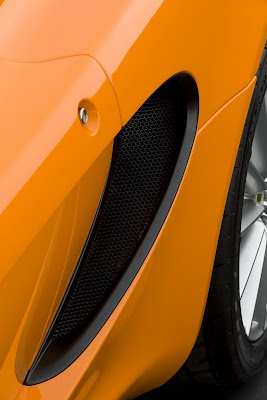
This is the new Audi RS5, a £60,000 super-coupe with a high-revving 4.2-litre V8 and a 174mph top speed. It's Audi's riposte to the BMW M3, and we'll see it in the metal at next week's 2010 Geneva motor show.
How powerful is the new Audi RS5?Under the bonnet is the same naturally aspirated 4163cc V8 that powered the old RS4 and is currently found in the R8, but Audi’s Quattro GmbH division – responsible for all of Ingolstadt’s RS models – has squeezed an extra 30bhp out of the engine. That means the high-revving, direct-injection 4.2-litre V8 produces 444bhp at 8250rpm, along with 317lb ft from 4000 to 8000rpm.
That power is sent through a seven-speed S-tronic gearbox to all four wheels, and with the Launch Control system engaged it’s enough to propel the 1725kg coupe to 62mph in 4.6 seconds, before powering the RS5 on to its 155mph limiter. Of course, if you hand over a little extra cash, Audi will increase the top speed to 174mph.
The new Audi RS5 is relatively economical too. BMW’s new stop/start-equipped M3 manages 25.2mpg, but the more powerful RS5 betters it with a claimed 26.2mpg. Thank the dual-clutch transmission, an on-demand oil pump and an intelligent alternator that’s only charged during coasting and braking.
What about the RS5's chassis tweaks?Top of the list is Audi’s new crown-gear centre differential, which can send up to 70% of the RS5’s torque to the front wheels, and as much as 85% to the rear – a 40:60 front-rear split is standard. The new diff works in conjunction with an electronic torque vectoring system, which can brake any wheel to stabilise the car and aid cornering. Audi’s Sport differential is also an option, and it actively distributes torque between the rear wheels
Beyond the trick diffs, the basic suspension sits the car 20mm lower, and 19-inch alloys wearing 265/35 tyres are standard. Up front the brakes measure 365mm (the discs and callipers are aluminium) but 380mm carbon-ceramics are an option. There's also Audi's Drive Select system with switchable settings for engine, gearbox and steering, and a new Dynamic Steering system is on the options list.
It looks a little too similar to an S-line A5 or an S5 – how does the RS5 stand out in the car park?For a start, if the standard wheels aren’t big enough for you then 20in rims are available. There's a big, bulging front bumper too, with two huge air intakes flanking the single frame central grille. Audi's OTT LED daytime running lights are standard, there's RS-spec alumnium door mirrors and oval exhausts, plus silver (or black) trim decorates the front splitter and rear diffuser.
A rear spoiler also pops up from the boot at 75mph, and retracts at 50mph. And if that's not enough Audi will offer a Carbon pack that trims the engine bay in the best black stuff, and sell you a sports exhaust so everyone can hear that V8 rev to over 8000rpm.
Inside there are leather and Alcantara sports seats, though harder buckets or more comfort-orientated ventilated seats are available, plus black gauges with white lettering.
UK deliveries of the RS5 won't start until October 2010, and Audi hopes to sell the car for under £60k.





 Some of us were just barely mastering our Big Wheels back in the 1970s, but we imagine most of the concepts at those Salon de Geneves all looked hairy and wild. You know what we're talking about. Star Trek meets George Barris design language, lower than your waist, nonsensical ingress/egress mechanisms, $5 afterthought interiors and colors pulled from the center of only the finest quaalude trips. Kinda like SEMA cars actually, but with European sensibility and sophistication.
Some of us were just barely mastering our Big Wheels back in the 1970s, but we imagine most of the concepts at those Salon de Geneves all looked hairy and wild. You know what we're talking about. Star Trek meets George Barris design language, lower than your waist, nonsensical ingress/egress mechanisms, $5 afterthought interiors and colors pulled from the center of only the finest quaalude trips. Kinda like SEMA cars actually, but with European sensibility and sophistication.



















































